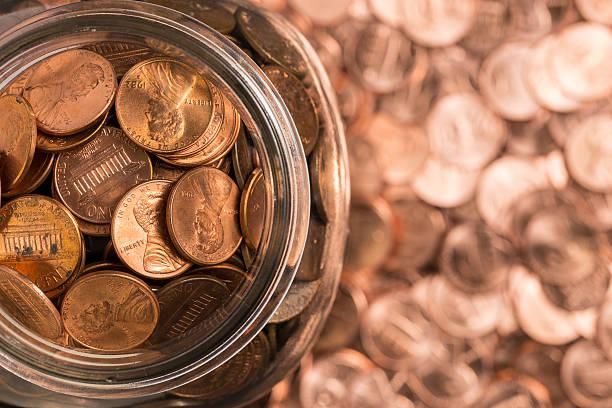When an American citizen thinks of Abraham Lincoln, they may think of his works toward abolition and being a highly accomplished president. Yet they most likely will turn to where they see him most often: on money. While the coin itself has been around since the 1700's, Lincoln's face has been on the obverse side since 1909 – when it was worth thirty times the value in 2021. Keeping pennies in circulation harms the economy, the environment, and are costing the American public more time than they are worth.
There are some sentimentalists that believe that the penny is as integral to the United States as a dollar bill, and while this is simply incorrect, the opinions are very strong. One argument given is that this will lead to businesses rounding all costs up to the nearest nickel, and disproportionally hurt poorer citizens. It is also argued that the American public wants to keep the penny for sentimental reasons, and point out that nickels are more expensive to make, and therefore would not be saving the US Mint any money at all. An attempt at sentimentalism may point out that charities often host "penny drives," while ignoring the fact that nickel, dime, or quarter drives may possibly increase these same donations twenty five times over.
Another popular stance states that the US will go into tremendous debt if they stop making the penny, since the nickel costs 9 cents to make. While not incorrect about the cost of the nickel, there is no real reason the Mint would need to produce more nickels than they already are each year; the only cost difference would be eliminating that of the penny. In 2018, is cost the US Mint 2.09 cents to make each individual penny: 1.78 for production, 0.25 for administration costs, and 0.03 for distribution costs. In 2019, this totaled to the production of the penny costing taxpayers $145 million on 7.04 billion pennies. With inflation rising steadily each year but the value of a penny remaining stagnant, this cost to Americans will only go up every year that the penny continues to be made.
While the US Mint is very clear and forward about many of the costs related to the final steps of making a penny, there is absolutely no available information on the cost per coin of the mining, smelting, minting and shipment of the materials for the coins, all of which have very harsh impacts on the environment. And while the Mint has gotten much more efficient and environmentally friendly, Congress admitted that there are absolutely no more options that could make the penny either cheaper, or more environmentally sound in a statement issued in 2014. While Mints around the country are working to be greener through methods like wind power, the cost on the environment of the materials used unfortunately may outweigh such a good practice. Reports on where the zinc in pennies come from is a mess to try and understand, as the US Mint claims it is from Canada, while Jarden Zinc Products, an American company, claims to be the sole company producing penny blanks to the Mints. Jarden claims to use the mines in Tennessee run by Nyrstar, the only American zinc miners in the States, but Nyrstar claims to have never worked with Jarden. Considering the weight of pennies produced in 2014 equaled 22,450 tons of zinc and copper, knowing where and how these products are mined is essential to truly knowing the impact on the environment, and this is information the US Mint clearly does not want consumers to have.
Lastly, we can add these previous factors together with another invaluable resource: time. In 2015, the average American worker made well over a penny a second, and based off the time it takes someone to bend over and pick one up off the ground, it would technically cost them more time to stop and pick it up rather than let it be. Between the amount of worker compensation, energy, and overall time committed to making pennies every year, there are absolutely no benefits to the American life brought by this shiny little coin. Since the late 1980's, both chambers of Congress have received multiple bills to eliminate the penny, leading to even more wasted time and tax dollars. Just when the American public thought the penny was only of monetary value, it proves itself to be a time waster as well.
Overall, there will never be a truly good reason to keep the penny that is not trying to appeal to the pathos of society. Hopefully one day the government will wake up to the detriment this tiny coin brings, and bring real change to the table to abolish it. Despite naysayers, logic, reason and proof will always point to the expulsion of pennies being the best for Americans monetarily, the earth, and even our time.


































